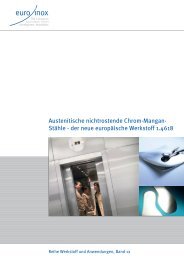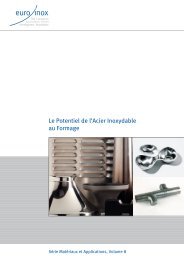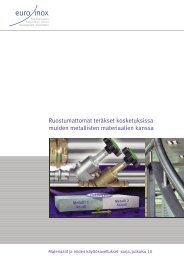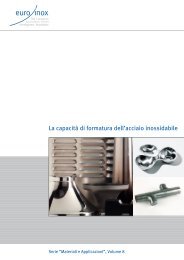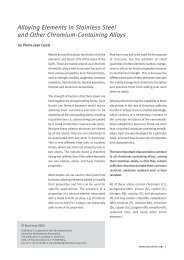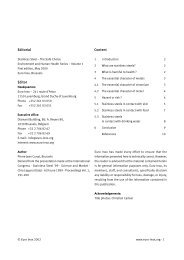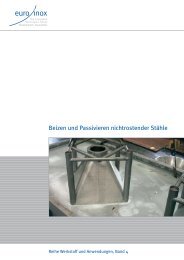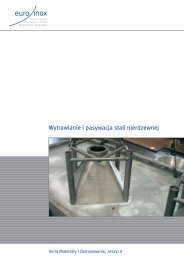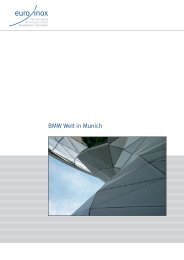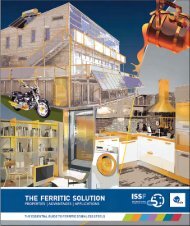Innovative Stainless Steel Applications in transport ... - Euro Inox
Innovative Stainless Steel Applications in transport ... - Euro Inox
Innovative Stainless Steel Applications in transport ... - Euro Inox
You also want an ePaper? Increase the reach of your titles
YUMPU automatically turns print PDFs into web optimized ePapers that Google loves.
Figure 67. Panel sections after longitud<strong>in</strong>al crash tests.<br />
In the results for the transverse tests (Figure 68) there is a significant difference between<br />
O and Vf-core panels tested at the same speed. This is well <strong>in</strong> l<strong>in</strong>e with quasi-static tests<br />
and can be expla<strong>in</strong>ed by the contribution of the cores to energy absorption. Vf cores<br />
allow more elastic deformation and thus convert k<strong>in</strong>etic energy more effectively <strong>in</strong>to<br />
elastic deformation – <strong>in</strong>dicated by ram bounc<strong>in</strong>g – whereas O-cores guide the energy<br />
<strong>in</strong>to plastic deformation <strong>in</strong> the surface sheets. A significant difference between buckl<strong>in</strong>g<br />
modes was detected: <strong>in</strong> the static test the global buckl<strong>in</strong>g mode was ma<strong>in</strong>ly activated<br />
while <strong>in</strong> the crash test local buckl<strong>in</strong>g was predom<strong>in</strong>antly present at the panel ends.<br />
(a) (b)<br />
Figure 68. Panel sections after transverse crash tests: (a) O core = rectangular hollow section<br />
type and (b) Vf core = sheet profile type (DOLTRAC p.187).<br />
107



